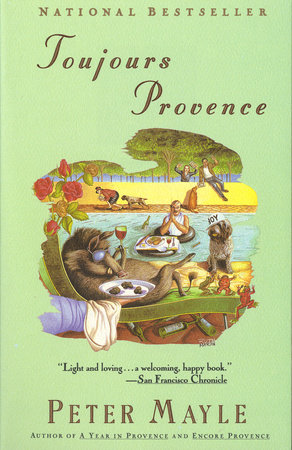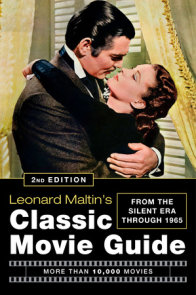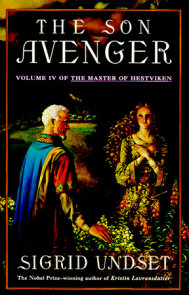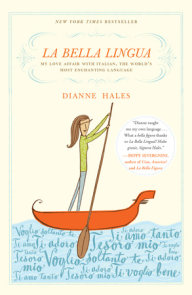READERS GUIDE
The questions, discussion topics, and reading list that follow are designed to enhance your group’s reading of Peter Mayle’s delightful books about life in Provence, where he and his wife bought a two-hundred-year-old stone farmhouse nestled in the foothills of the Lubéron Mountains.Introduction
Summer after summer, the Mayles had fled London in search of two or three weeks under the Mediterranean sun, promising themselves that one day they would make Provence their home. "We had talked about it," Mayle writes in A Year in Provence, "during the long gray winters and damp green summers, looked with an addict’s longing at photographs of village markets and vineyards. . . . And now, somewhat to our surprise, we had done it." Each season in their adopted homeland, they soon discover, brings its share of surprises, and every undertaking becomes a small adventure as they adjust to the rhythms of rural life, to the charming idiosyncrasies of the local population, and to a language that at times bears only a passing resemblance to the lessons on their French language tapes. The sense of urgency that ruled their northern, urban lives gives way to an acceptance of the gentler pace of the south. The renovations on their house take months longer than promised, but the workmen’s good humor, enthusiasm, and consummate skill more than compensate for the inconvenience of wintering without kitchen walls, central heating, and dependable electricity. Routine errands to the village become opportunities to wile away hours observing hotly contested games of boules, reading the ever-intriguing gestures that punctuate every street corner conversation, or listening to resident experts hold forth on the weather, history, the behavior of tourists, and local scandals while sipping a pastis at the café. Meals–whether eaten at home, at a neighbor’s, or in one of the dozens of small, family-run restaurants throughout the region–are long, leisurely occasions, dedicated to celebrating Provence’s agricultural bounty, the wines of its productive vineyards, glistening olive oils that range in color from jade green to transparent gold, and, during a short, much-anticipated season, Provence’s gastronomic gem, the truffle.Mayle’s unbounded curiosity, his well-honed powers of observation, and his wry sense of humor resonate in his tales and in his detailed portraits of the people he encounters–from the plumber with a penchant for philosophizing to the not-always-welcome guests who arrive from colder climes every summer. The books include plenty of tips and recommendations for those who contemplate visiting Provence. But Mayle’s real talent is that he makes it possible to enjoy the sights, sounds, smells, and tastes of this special corner of the world without leaving the comfort of one’s own reading chair.
From a birthday celebration that redefines the meaning of "country picnic" to the furtive business of buying truffles and a short history of pastis (the pride of Provence), in Toujours Provence Mayle recreates sumptuous feasts, shopping excursions, and wine-tastings, enhancing each event with commentary from experts eager to impart their wisdom about the ways of the countryside.
Questions and Topics for Discussion
1. In "Boy," "Passing 50 Without Breaking the Speed Limit," and "Fashion and Sporting Notes from the Ménerbes Dog Show," Mayle offers affectionate portraits of his wife. Would you have liked to learn more about her? Do you think that as a woman she has a different perspective on life in Provence?
2. Why does Mayle create an air of mystery and suspense when he describes his two excursions to see Monsieur X, the truffle seller? Does the extreme secretiveness surrounding the buying and selling convey something more than the extraordinary value placed on truffles?
3. Why does Mayle find "the wise, venal, and congenitally crafted Massot" [p. 90] so appealing? How do Massot’s peculiarities and his approach to life add an unexpected dimension to Mayle’s portrait of Provence?
4. In "As Advertised in Vogue," Mayle mocks the Beautiful People who are discovering Provence. Are his criticisms legitimate? Can the "invasion" of outsiders bring benefits to Provence and to other rural areas without destroying the peace and beauty that make them so attractive?
5. Régis, the track suit-wearing gourmet, has definite theories about why France provides the best food and best eating experiences in the world [p. 166-7]. How do American eating habits and expectations compare to those of the French and the English? From your own experience, is it possible to find great, inexpensive restaurants in the United States? Do diners and small town restaurants fill the same role in this country as relais routiers do in France?
6. One of their visitors accuses the Mayles of "going native" [p. 231]. How do the vignettes in Toujours Provence differ from the stories in A Year in Provence? Do they reflect fundamental changes in Mayle and his way of thinking about life?




















